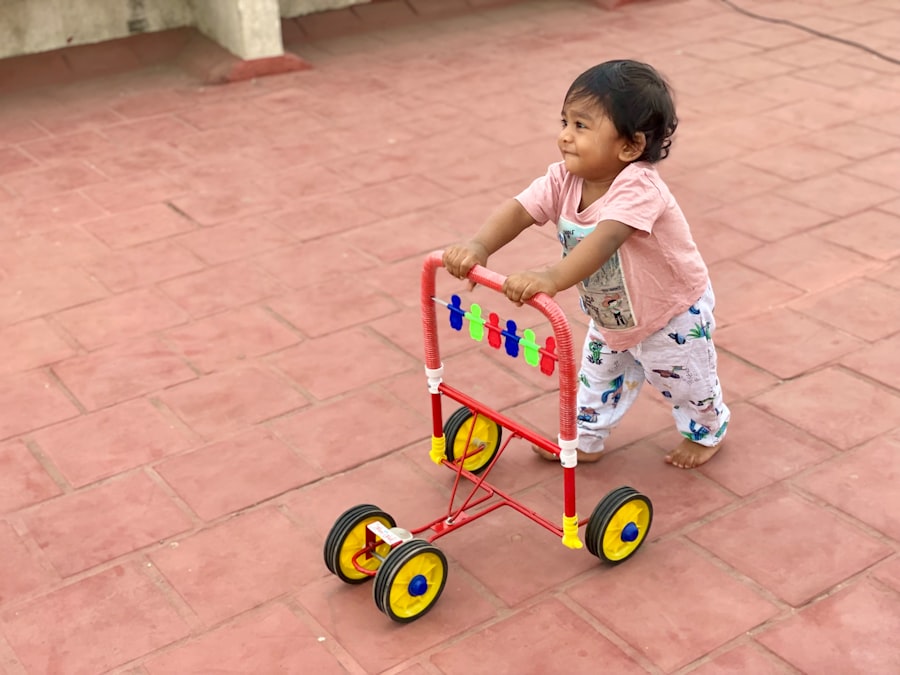
Wait! Don’t Go Yet! 👋
We see you eyeing those adorable outfits! 😍 Before you leave, here’s 10% OFF your first order!
Hurry, your little one’s next favorite outfit is waiting! 🛍️✨

We see you eyeing those adorable outfits! 😍 Before you leave, here’s 10% OFF your first order!
Hurry, your little one’s next favorite outfit is waiting! 🛍️✨
Childhood is a complex and dynamic period characterized by rapid cognitive, emotional, and social development. During these formative years, children navigate various developmental stages that shape their understanding of the world around them. One of the most significant aspects of this journey is the evolution of their cognitive abilities, particularly in relation to imagination and reality.
Young children, especially those in the preschool and early elementary years, often engage in imaginative play, which is a crucial part of their development. This imaginative capacity allows them to explore different scenarios, roles, and emotions, fostering creativity and problem-solving skills. As children grow, they begin to differentiate between what is real and what is not.
This distinction is not always clear-cut, as their understanding of reality is still developing. For instance, a child may create an elaborate story about a dragon living in their backyard, fully believing in its existence during playtime.
For example, a child might tell a friend that they have a pet unicorn at home. This statement is not meant to mislead but rather to engage in playful interaction. Recognizing this distinction is vital for adults who may misinterpret such statements as dishonesty.
As children mature, they begin to grasp the concept of truthfulness and the implications of lying. They learn that certain statements can have consequences, both socially and emotionally. For instance, a child who tells a fib about completing their homework may face disappointment from a parent or teacher when the truth comes to light. This realization marks a significant shift in their understanding of honesty.
Adults must be attuned to these developmental nuances, as mislabeling imaginative expressions as lies can stifle creativity and lead to confusion about the nature of truth.

When children express themselves through imaginative stories or make statements that may not align with reality, it is crucial for adults to respond with empathy and understanding. Instead of reacting with frustration or disbelief, caregivers should approach these situations with curiosity and compassion. For example, if a child insists that they saw a fairy in the garden, rather than dismissing their claim outright, an empathetic response might involve asking questions about the fairy’s appearance or what it was doing.
This approach validates the child’s feelings and encourages open communication. Empathy also plays a significant role in helping children navigate their emotions surrounding honesty and deception. If a child feels ashamed after being caught in a lie, responding with understanding can foster a safe space for them to express their feelings.
Adults can share their own experiences with honesty and the challenges they faced, reinforcing that everyone makes mistakes. By modeling empathy, caregivers can help children develop emotional intelligence and resilience, equipping them with the tools to navigate complex social interactions.
Instilling the value of honesty in children is a fundamental aspect of their moral development. Teaching them about honesty goes beyond simply instructing them not to lie; it involves helping them understand why truthfulness matters in relationships and society at large. One effective way to convey this message is through storytelling.
Parents can share age-appropriate tales that highlight the consequences of dishonesty and the rewards of being truthful. For instance, classic fables like “The Boy Who Cried Wolf” illustrate how lying can lead to distrust and isolation. In addition to storytelling, engaging children in discussions about honesty can reinforce its importance.
Parents can create scenarios where children must choose between telling the truth or lying, prompting them to think critically about the potential outcomes of each choice. Encouraging open dialogue about honesty allows children to express their thoughts and feelings while reinforcing the idea that honesty is a valued trait in their family and community.
Positive reinforcement is a powerful tool for encouraging desired behaviors in children, including honesty. When children are truthful, acknowledging their honesty with praise can reinforce this behavior. For example, if a child admits to breaking a toy instead of hiding it, an adult might say, “I really appreciate you telling me the truth about what happened.” This affirmation not only validates the child’s honesty but also encourages them to continue being truthful in the future.
Incorporating reward systems can also be effective in promoting honesty. Parents might establish a chart where children earn stickers or points for each instance of truthful behavior over a week. Once they reach a certain number of points, they can receive a small reward or privilege.
This approach not only motivates children to be honest but also helps them associate positive feelings with truthfulness, reinforcing its importance in their lives.

Parents should explain to their children that while it’s okay to use imagination during playtime, it’s important to be truthful when discussing real-life situations. This helps children understand the difference between fantasy and reality and the importance of honesty in their daily interactions.
In addition to setting expectations, outlining consequences for dishonesty is equally important. Children need to understand that lying can lead to negative outcomes, such as loss of trust or privileges. However, it’s crucial that these consequences are age-appropriate and delivered in a constructive manner.
For example, if a child lies about completing chores, instead of resorting to harsh punishment, parents might require them to complete the chores while discussing why honesty is essential for maintaining trust within the family. This approach helps children understand the importance of honesty while also teaching them valuable lessons about responsibility and accountability.
Children learn by observing the behaviors of adults around them; therefore, modeling honesty and integrity is paramount for parents and caregivers. When adults demonstrate truthful behavior in their daily lives—whether it’s admitting mistakes at work or being honest about feelings—children are more likely to internalize these values. For instance, if a parent accidentally spills juice on the floor but admits it rather than trying to hide it, they are teaching their child that owning up to mistakes is an important aspect of integrity.
Moreover, discussing real-life situations where honesty played a crucial role can further reinforce this lesson. Sharing personal anecdotes about times when being honest led to positive outcomes or strengthened relationships can provide children with relatable examples of integrity in action. By consistently modeling these behaviors, adults create an environment where honesty is valued and expected.
In some cases, persistent dishonesty may indicate underlying issues that require professional intervention. If a child frequently lies despite consistent guidance and reinforcement from caregivers, it may be beneficial to seek help from a child psychologist or counselor. These professionals can assess whether there are deeper emotional or behavioral concerns contributing to the child’s tendency to lie.
Therapeutic interventions can provide children with coping strategies for managing emotions related to honesty and help them develop healthier communication skills. Additionally, involving professionals can offer parents valuable insights into effective parenting techniques tailored to their child’s unique needs. By addressing these issues early on with professional support, families can foster an environment conducive to honesty and emotional well-being.
In conclusion, navigating the complexities of childhood honesty requires patience, understanding, and proactive strategies from caregivers. By recognizing developmental stages, responding empathetically, teaching the value of truthfulness, using positive reinforcement, setting clear expectations, modeling integrity, and seeking professional help when necessary, adults can guide children toward becoming honest individuals who value integrity throughout their lives.
When Toddlers Lie: How to Handle Early Fibs Without Shaming discusses the delicate balance of addressing dishonesty in young children without causing shame or embarrassment. For further insight into parenting strategies, check out this article on Mommy Malaysia that offers tips on fostering honesty and integrity in kids from a young age. By creating a supportive and understanding environment, parents can help their children navigate the complexities of truth-telling and build a foundation of trust in their relationships.
Toddlers may lie for a variety of reasons, including a desire to avoid getting in trouble, to gain attention, or to test boundaries and see what they can get away with.
It’s important for parents to respond to toddler lies with understanding and patience, rather than shaming or punishing the child. This can involve calmly discussing the truth, setting clear expectations, and modeling honesty.
Parents can encourage honesty in toddlers by praising and reinforcing truth-telling, creating a safe and open environment for communication, and avoiding overreacting to minor misdeeds.
Toddlers typically start to experiment with lying around the age of 2 or 3, as they begin to develop a sense of self and understand the concept of truth and falsehood.
Yes, it is normal for toddlers to experiment with lying as they navigate their developing understanding of the world and their own autonomy.